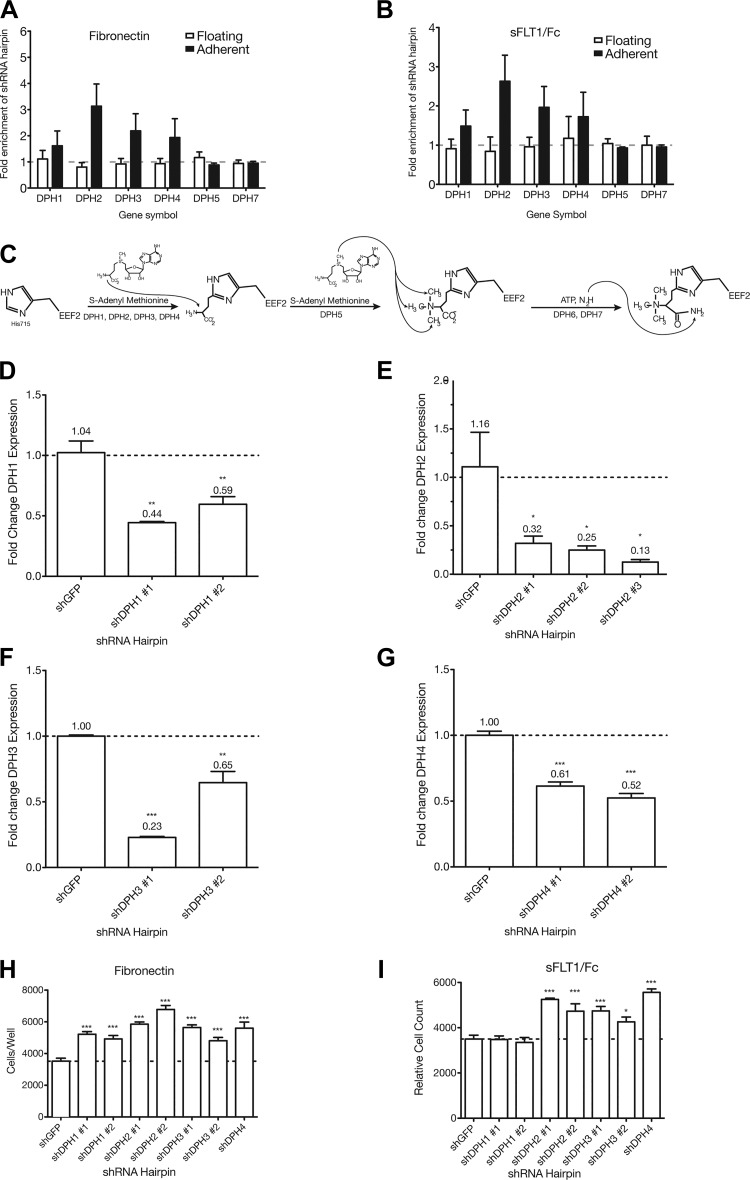Fig. 2.
shRNA knockdown of diphthamide biosynthesis protein (DPH) genes increases podocyte adhesion to fibronectin and soluble Fms-like tyrosine kinase-1 (sFLT1)/Fc. A and B: mean fold enrichment of all hairpins (significantly enriched and depleted) present in the 90K library against each of DPH1, DPH2, DPH3, and DPH4 in the floating and adherent fraction on either fibronectin or sFLT1/Fc. Other members of the biosynthetic pathway, DPH5 and DPH7, which were not enriched in either fraction on either substrate, are also shown for comparison. C: the diphthamide biosynthesis pathway. DPH1, DPH2, DPH3, and DPH4 all play a role in the first step of diphthamide biosynthesis. DPH5 and DPH7 are involved in subsequent steps. D–G: mean fold change in mRNA expression of the target gene for a given shRNA relative to small hairpin green fluorescent protein (shGFP) in stable podocyte cell lines. SEs and exact values are shown above the bars. D: DPH1 gene expression was diminished to 44% and 59% of shGFP levels in shDPH1 no. 1- and no. 2-expressing cells, respectively. E: DPH2 gene expression was diminished to 32%, 25%, and 13% of shGFP levels in shDPH2 no. 1-, no. 2-, and no. 3-expressing cells, respectively. F: DPH3 gene expression was diminished to 23% and 65% of shGFP levels in shDPH3 no. 1- and no. 2-expressing cells, respectively. G: DPH4 gene expression was diminished to 61% and 52% of shGFP levels in shDPH4 no. 1- and no. 2-expressing cells, respectively. H and I: two hairpins for DPH1, DPH2, and DPH3 and one hairpin for DPH4 were selected to make stable cell lines and were simultaneously assessed for increased adhesion to fibronectin and sFLT1/Fc relative to shGFP-expressing cells. ***P < 0.001; **P < 0.01; *P < 0.05.

